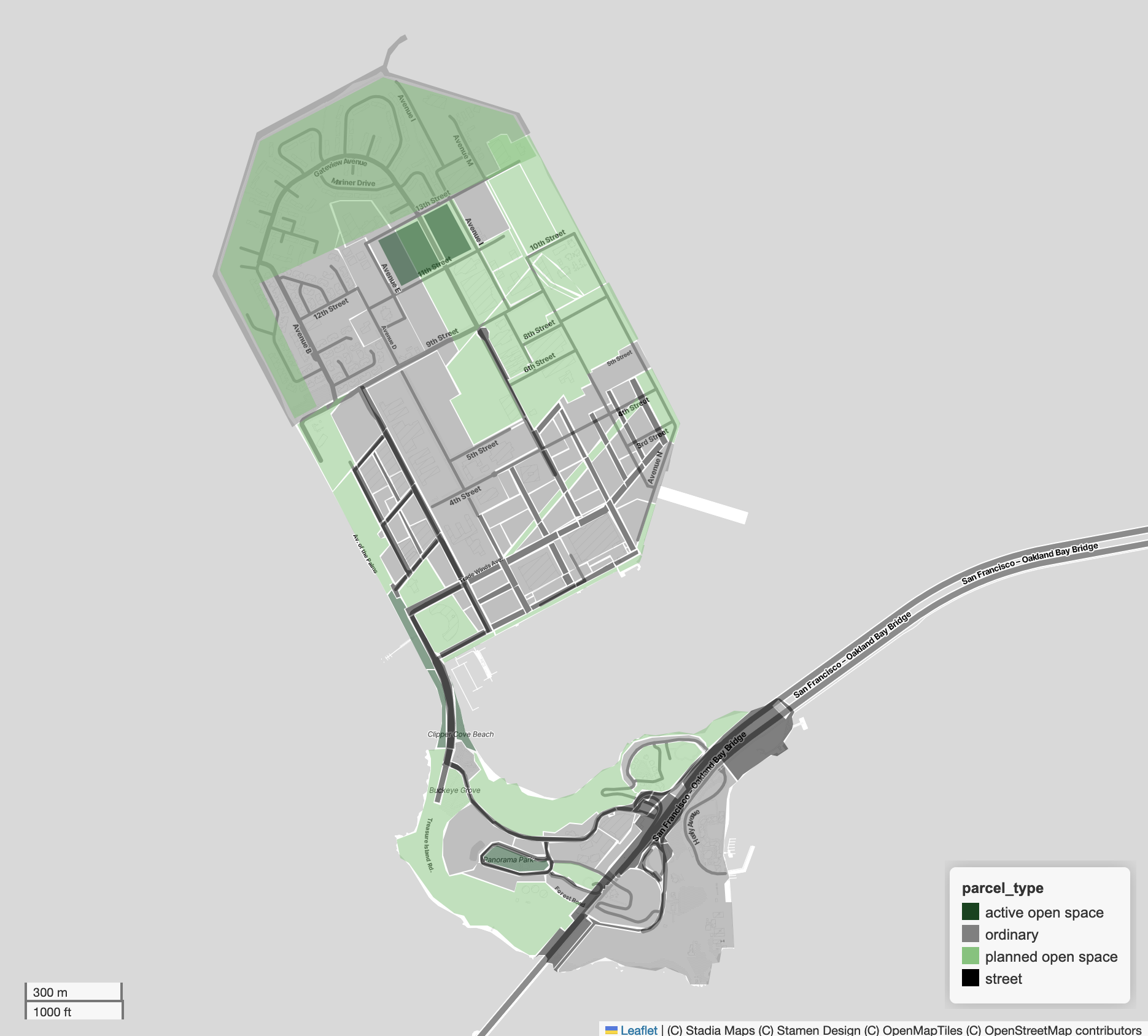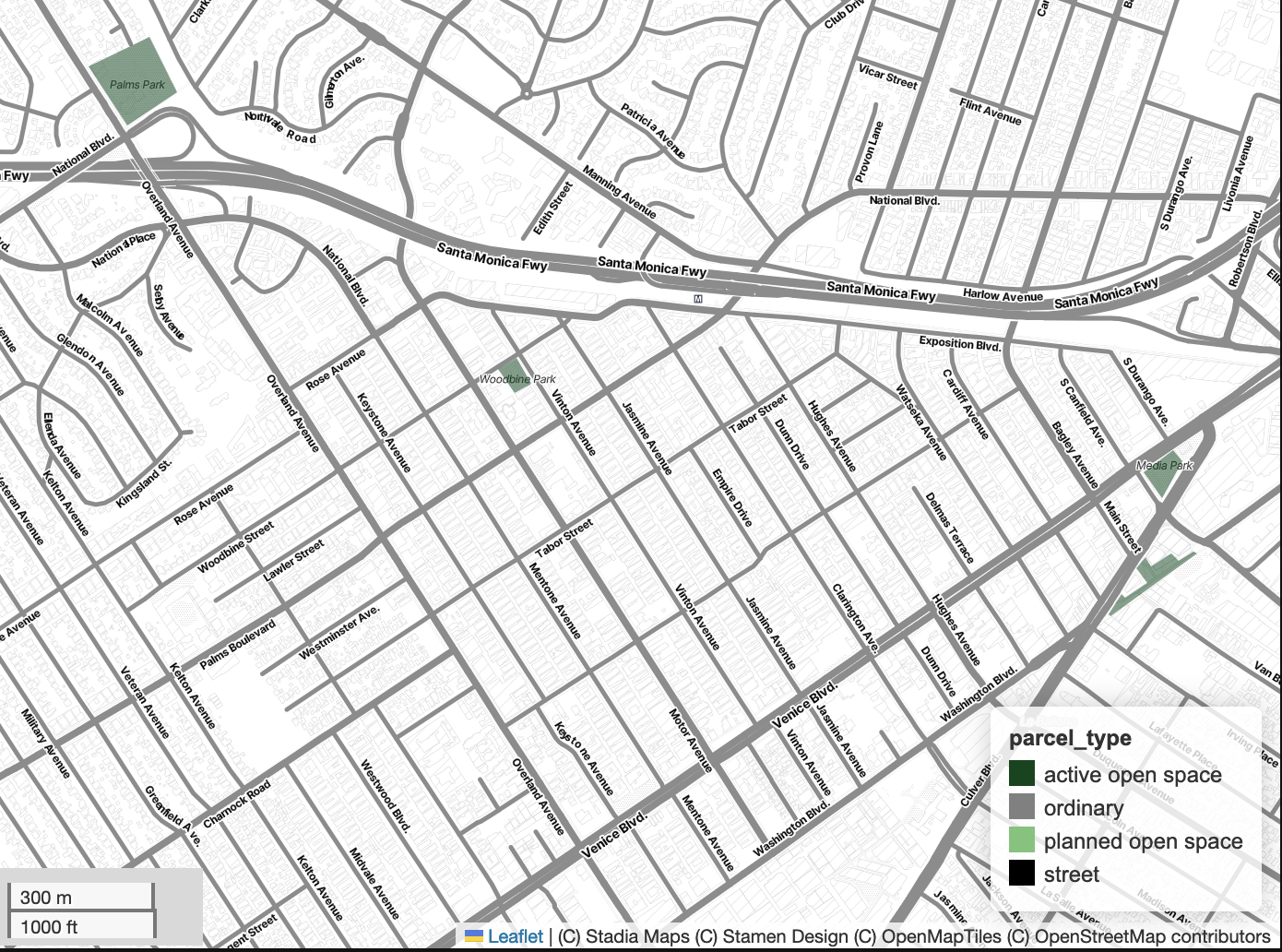Moving Out
Los Angeles
I lived in LA for about 6 years, mostly car-free, almost all of that in the Westside neighborhood of Palms. All things considered, Palms is a pretty great spot. About 60,000 people, almost all renters housed in anything from an original 1950s dingbat to a new-build 5-over-1. All tucked into about 2 square miles between the San Diego Freeway, Santa Monica Freeway, and Venice Blvd.
Palms has the best people. I’m not sure I’ll ever get to live as close to as many good friends ever again, and the Buy Nothing group beats any other that I’ve seen. It’s also a relatively easy place to live without a car. Plenty of shops were a long walk or short bike ride away and transit could easily take you in a few different directions. There sure are an awful lot of cars however. Except for the last 9 months of living there, I didn’t own one and yet so much of Palms’ limited space goes towards storing a whole lot of vehicles, whether on-street or wedged in various ways into apartment buildings. Both places I lived came with a parking space, which I mostly didn’t need.
Palms does not have much public space. In fact it hardly has any: just the postage-stamp sized Woodbine Park. Even if you count the not-really-in-Palms Palms Park, the picture doesn’t change that much. People head to downtown Culver City to hang out at the Steps or along their more vibrant streets, then meet each other and realize they both live in Palms. A real big park would make the neighborhood so much nicer, and yet it’s hard to imagine that happening. Changing the street grid? Demolishing housing to make room? Even if you believe, and I do, that the city could replace all that housing and make big changes that leave people better off than before, drastic land use changes just don’t happen all that often these days. Partially for good reasons (those drastic changes in the past were often harmful, with that harm falling disproportionately on disadvantaged communities), but I think also because the City of LA doesn’t seem all that interested in or proactive about improving the quality of life in the city beyond the status quo.
After getting yelled at by a pickup truck driver for daring to cross the street at a perfectly legal unmarked crosswalk, I got a chance to advocate for a better crossing there to a senior traffic engineer. We were all in agreement, and yet even when the need is as small as 10 stripes of white thermoplastic and a couple signs nothing has happened for 3 years and counting.
It’s not a great status quo to have 60,000 people, mostly renters, surrounded by two freeways and a bunch of Westside neighborhoods seemingly intent on keeping out anyone who can’t afford a single-family home. In fact the city’s plan seems to be to encourage more housing in places like Palms while allowing single-family neighborhoods to remain exclusionary. You would think a “strategy” like that would come with aggressive action to provide the public amenities that density enables, yet even incremental changes take ages (one big thing did happen - Venice Bl got protected bike and bus lanes!).
I stayed in my old apartment through the peak of the Covid pandemic – at times pretty scared. I think spending so much time inside a single set of rooms, inside a single neighborhood got me thinking if I would be there forever, along with a version of “is this it?”. I got to move apartments, into my own little studio with enough patio space to hang a hammock. That felt good, but if a little move felt good, maybe a bigger one would feel even better?
Stuff I liked doing in LA
- hanging out with friends, especially venturing out as a group into a different neighborhood
- riding my bike to the beach (often to go sailing)
- be in awe of how vast the city was and how I’ll never fully know it
- get out to the Channel Islands
- an occasional long walk
- getting amazing tacos, pretty much anywhere
- CicLAvia
- museums
Open Space Maps
Mapping Treasure Island is a little hard since the parcels are constantly changing. OpenStreetMap seems to keep up best with the current state of things, but I’ve also tried to create an intelligable GIS map largely based on city parcel data that can show development progress at a more abstract level. Here it is showing just how much more open space my new neighborhood will have, and already has, compared to my old one:

